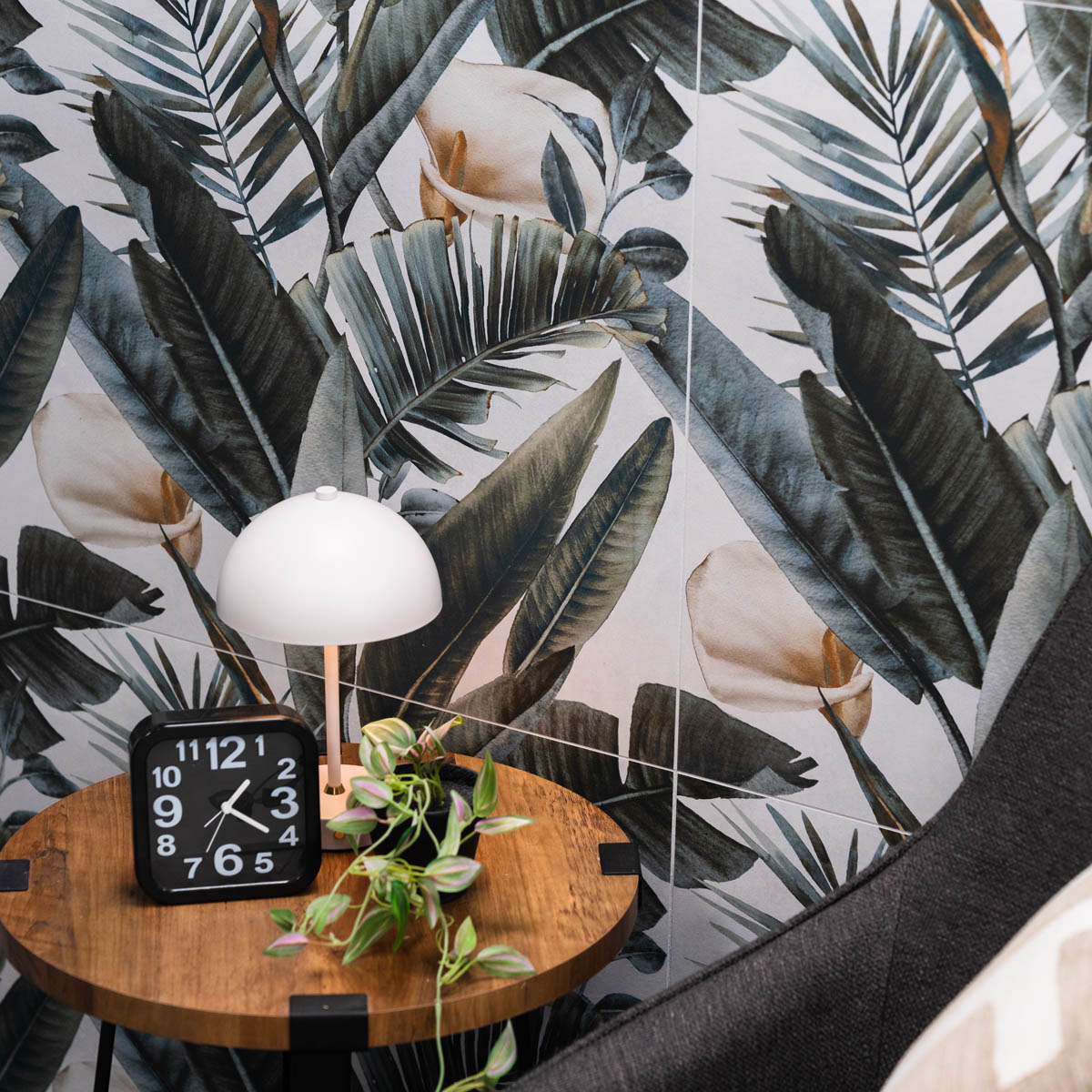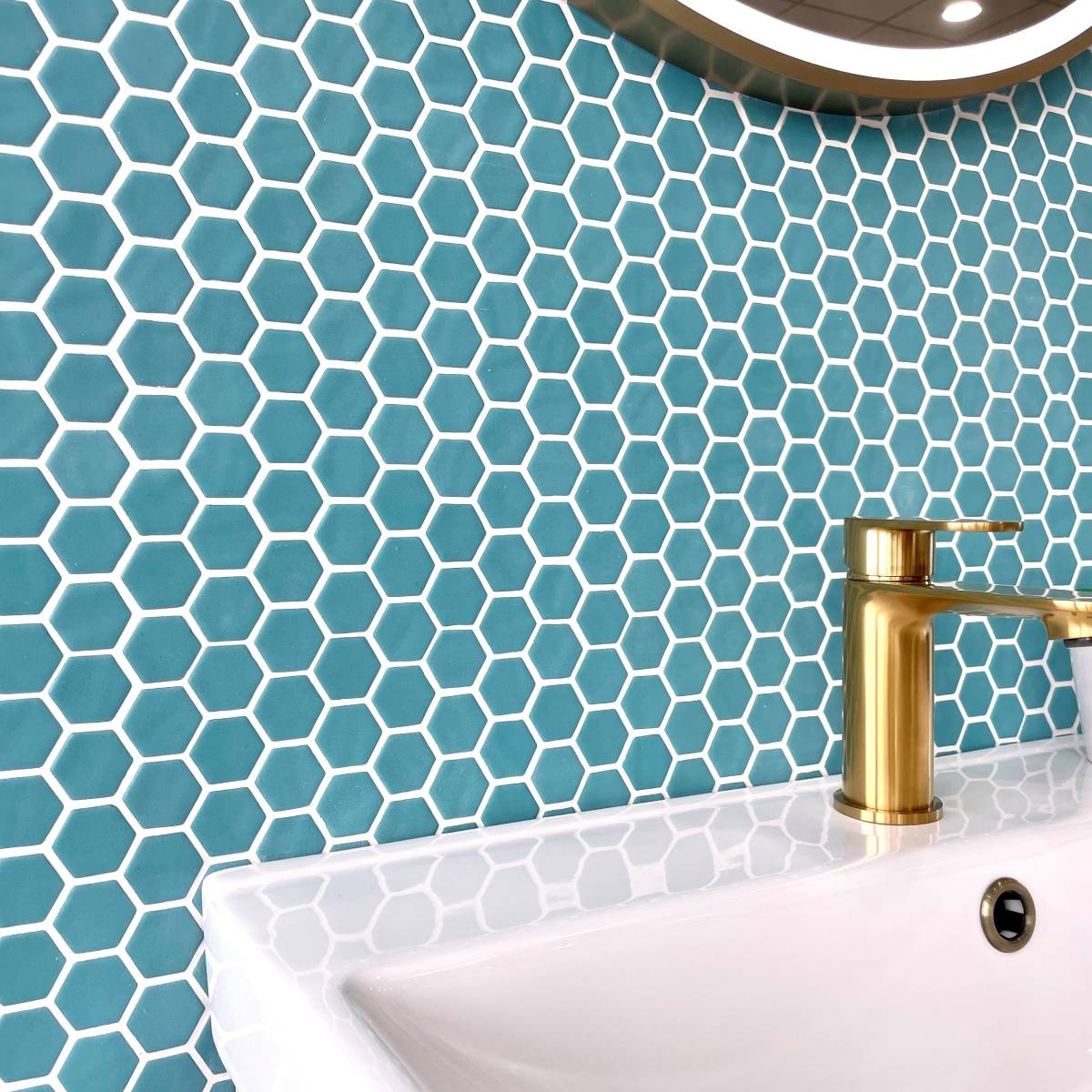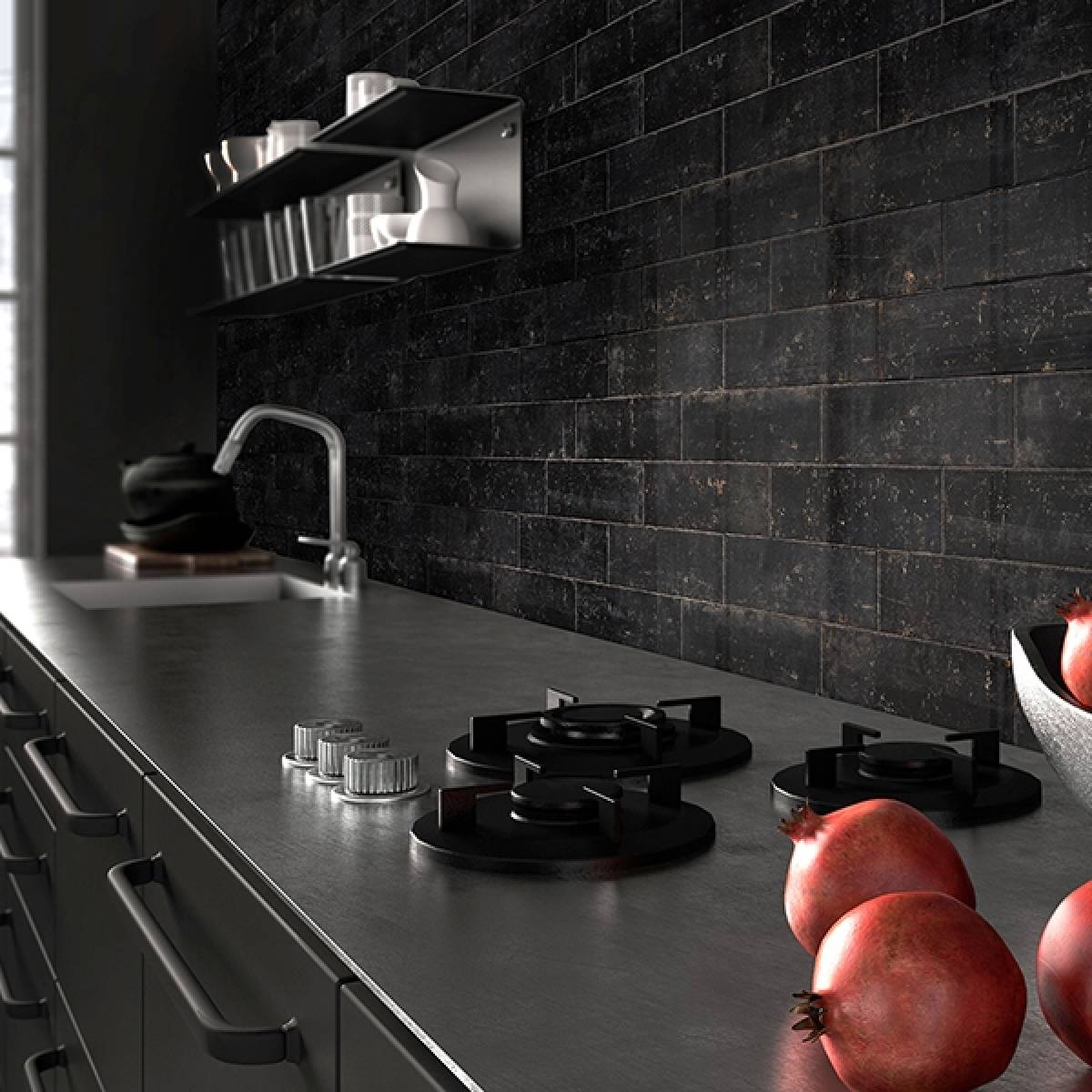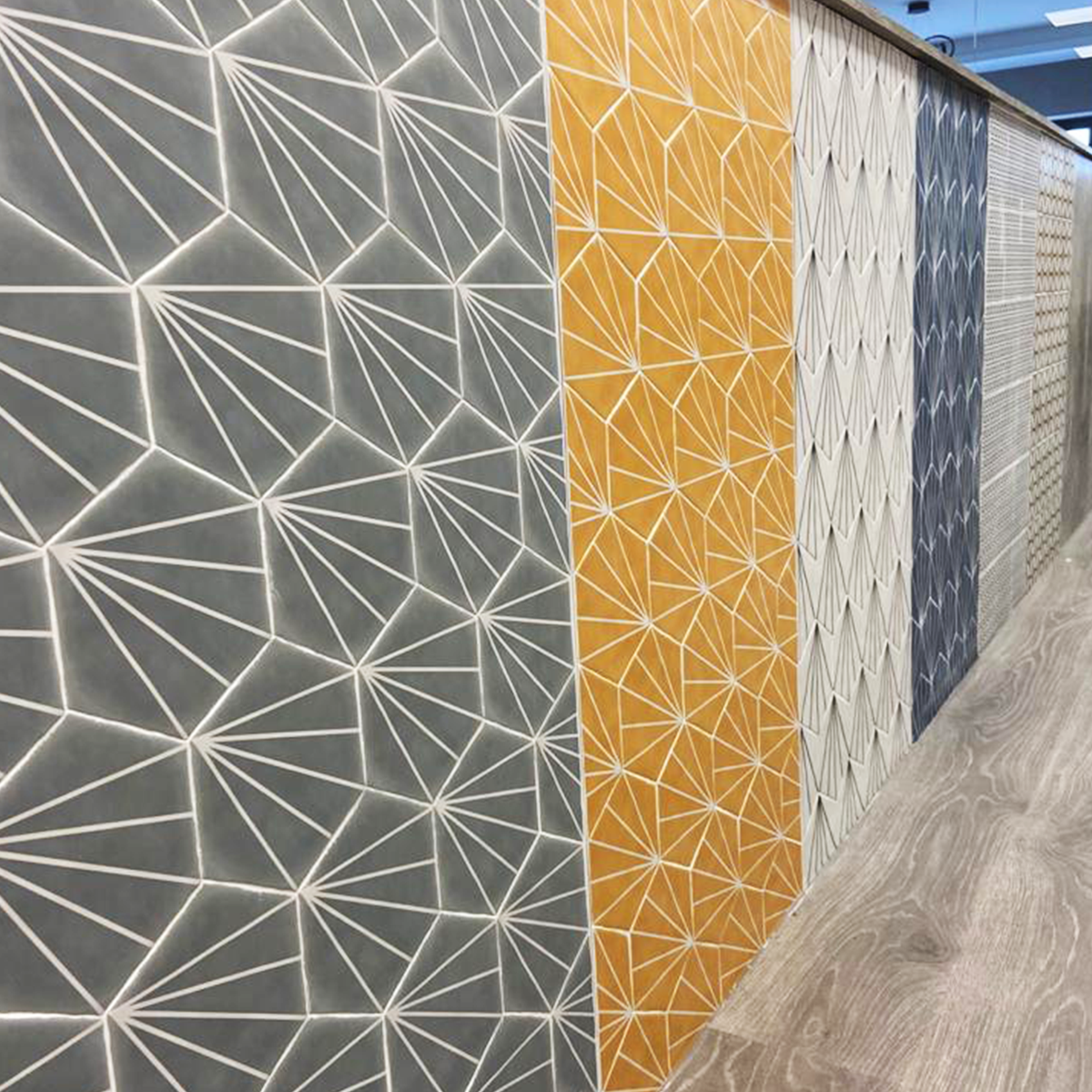Tips for new tradesmen: How to plan a tile layout

For the next installment of our ‘Tips for new tradesmen’ series, we’re looking at tile layouts. While your customers may have already decided on the tiles they want, there are various things to consider in terms of the room they’re tiling and the type of tiles they’ve chosen. There’s a skill in laying tiles so that they’re presented at their best and aren’t overwhelmed by other décor or items within the space.
If you can advise your customers on how best to lay their tiles, then they’ll have a more informed understanding of how everything will look, once completed. This not only manages expectations from the outset, it also gives them all the information upfront so they can alter their tile choices, as required, to achieve a slightly different look.
It may be that your customer hasn’t decided upon their tiles yet, however, in which case it’s important to be able to advise accordingly as to what will work best in their room.

Patterned tiles like the Iron Tropic Matt Tiles, can create fantastic feature walls.
Key factors to consider when planning a tile layout
Which room is being tiled?
The first thing to consider is which room in the house is being tiled – is it the kitchen, hallway, bathroom or elsewhere? Also, how much of the room needs tiling? Floor and wall tiling differs in design and durability, while high humidity spaces such as bathrooms will need tiling which is able to withstand exposure to this type of environment.
High-traffic areas will also require more robust tiling than a wall, for example, so all of this should be discussed with your customer at the beginning of the process.
Consider whether the tiles need to be:
- Slip-resistant
- Hard-wearing
- Splash-proof
- Decorative
What size is the room?
Considering the size of room being tiled will affect the final layout and negative space needs to be taken into account, so the room doesn’t appear crowded or overwhelmed. This will also help to highlight other features within the room.
What size does the customer want their tiles to be?
The size of tiles will also determine layout, as large format tiles will require a different approach to smaller mosaic tiles. This will also tie in with the size of the room and the specific area which is being tiled, for example, a feature wall, floor or around a vanity unit or kitchen worktop.

Mosaic tiling is often used to create feature areas around vanity units.
Grouting requirements
Knowing what type of grouting your customer wants is also important to establish from the outset, as the tile type will dictate whether more or less of this is needed. Meanwhile, some tiles require less grouting generally, which will affect layout and tile spacing. For example, rectified tiles have cleaner edges, being cut and shaped more precisely, so are laid much closer together, minimising grout lines.
Tile layout styles
Once the above points have been discussed, the placing of the tiles can then be decided upon. There are various ways to do this and, again, the tiles chosen by your customer will influence this. Metro tiles, for example, can be laid horizontally, vertically or in a chevron-style pattern, so you need to establish exactly what the customer would like and how this will look in the room.

Metro tiles can be laid horizontally, as above, vertically or in a chevron style.
Quarter method for laying floor tiles
No matter how the tiles are laid, you should always begin in the centre of the room and work outwards from there to ensure symmetry. Marking the floor with chalk lines will help to ensure that your pattern is square.
The quarter method is a standard way to lay tiles and involves dividing the room into four quarters to plan the layout. You should locate the midpoint of the walls before marking these with chalk or pencil, then use these to find the centre of the room, marking out a cross on the floor and ensuring that the lines you’ve made are at right angles.
Once you’ve marked out the floor correctly, you can then lay the tiles. You might want to do a dry run, where you place them on the ground to check how they look before securing them in place. Lay the tiles along the four lines you’ve marked out and then fill in the spaces around these with the rest of the tiles. You can subsequently see how the tiles might need to be rearranged, depending on how they look, or how your customer directs you as to the layout.
Quality tiling at Tradeshack
There are various ways in which tiles can be arranged, depending on what your customer wants, with different tile textures and shapes being used to create striking designs. One tile can also be laid in a variety of ways, for example, the Palm Striped Hexagon Decor Mustard Porcelain Tile – which is also available in a range of colours – can be positioned so that the pattern running across the tiles runs in a particular direction, or creates a starburst effect.

The Palm Striped Hexagon Décor Tile can be arranged in various striking patterns.
Zoned tiling can also create contrast in a room and may involve using differently shaped and sized tiles beside one another, which will impact upon how these are laid. For example, large format tiles may be used on a wall, with smaller mosaic tiling inserted amongst them as a feature area around a vanity unit.
Whatever the layout, when it comes to laying tiles, there can be various challenges, so it’s important to consider all the angles before beginning a project – and to ensure that your customer is clear about exactly how everything will look.
For all your tiling needs, Tradeshack is here to help with everything from supplying the high-quality tiles – and the adhesives for laying them – to providing expert advice on which styles work best together. Just contact us today for more information or for advice on any tiling queries.
For more information about our tiles, just email our team at info@bathshack.com or call (028) 9077 0188. Alternatively, drop into our warehouses in Antrim or Duncrue, Belfast.





